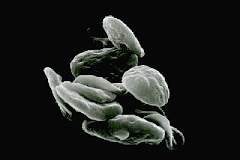


Perhaps the next frontier beyond PRP is Stem Cells. While the topic is the subject of much controversy politically, technology now allows us to utilize adult stem cells opposed to embryonic cells to treat disease.
Stem Cells are the birthplace of platelets rich in healing properties, which can potentially program cells to regenerate tissue & cartilage. Currently stem cells can be retrieved via embryo (controversial in US), umbilical cord, bone marrow, peripheral blood, & in the near future adipose (fat) cells via liposuction.
Peripheral blood, or simply drawing blood from a patient's arm is the least invasive & most promising method. Patients require a shot or medication to release stem cells from the marrow to the blood stream. It can then be processed & used for injection. In the future patients may have the option to store unused stem cells for future use as well.
Stem cells are being used in the US mostly for cancer patients to assist in recovery from the ill effects of chemotherapy. A few practitioners are using them orthopaedically with reportedly good results in arthritis. Internationally there are centers where patients seek alternative treatment to serious diseases like spinal cord injury, multiple sclerosis, and ALS.
There is an adult stem cell organization which lists numerous articles & personal stories.
www.adultstemcelleducation.com







































